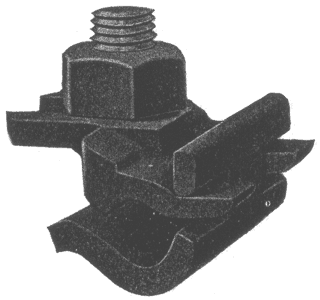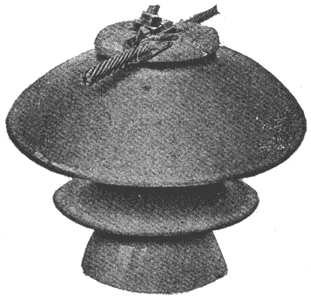[Trade Journal]
Publication: Western Electrician
Chicago, IL, United States
vol. 39, no. 25, p. 510, col. 2
Insulator Clamps for Long-span
Transmission.
The accompanying illustrations show some useful devices which are now being generally adopted to take the place of tie-wires on long-span electrical transmission systems. The clamp shown in Fig. 1 is designed to securely hold the cable or transmission conductor in the groove of the insulator. The insulator, shown in Fig. 2, is constructed with an undercut recess on either side of the groove in the center of the insulator top, so that when the clamp is in position it is interlocked under the projecting portion in such a manner that the wire cannot be removed or the clamp separated from the insulator without unlocking the clamp.
 |
| Fig. 1. Interlocking Insulator Clamp. |
Construction is such that the end strain on the clamp is distributed so that excessive pressure can at no time be concentrated on a small area of porcelain, and at the same time sufficient clearance is allowed so that the cable and clamp together may move freely when the cable or conductor is in place in the insulator, avoiding the hinge action which takes place when the wire is rigidly held in the insulator.
The heavy construction now adopted for long-span transmission requires that the fastening between the conductor and supports should be strong enough to stand the normal maximum strain calculated for the line under differing weather conditions. To increase the efficiency of the transmission line, steel towers, steel pins and heavy insulators are now being generally used, and experience has proved that, to be consistent with this construction, stronger and more reliable fastenings than are provided by the tie-wire should be used.
 |
| Fig. 2. Position of Clamp in Insulator. |
These insulator clamps are manufactured by the Clark Electric and Manufacturing Company, 135 Broadway, New York city, which is putting on the market many. different designs of clamps to suit every requirement, both for the regular standard shape of insulator and special insulators of its own design.
